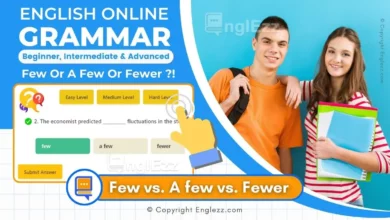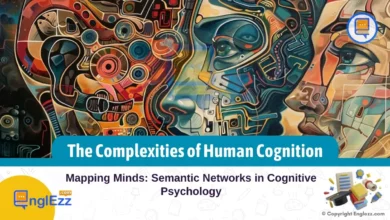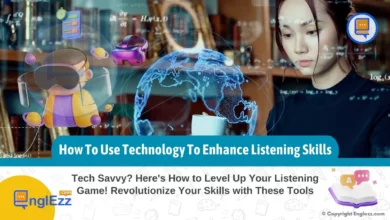In the symphony of educational environments, few notes resonate as powerfully as inclusivity and representation in student writing. Within the hallowed walls of high school classrooms, echoes of diverse perspectives yearn to be heard, understood, and celebrated. It is in this vibrant tapestry of voices that the seeds of empathy, understanding, and unity find fertile ground to flourish.
The significance of fostering a supportive space that reverberates with the harmonies of varied experiences cannot be overstated.
Table of Contents
- Empowering Voices: Fostering Student Diversity Through Writing in High School Classrooms
- Empowering Student Voices through Inclusive Writing Practices
- Cultivating Diversity through Literature Selections
- Building an Inclusive Writing Community
- Leveraging Technology for Inclusive Learning Environments
- Closing Tips:
- Empowering Voices for a Diverse Future
- Conclusion:
- Frequently Asked Questions About Fostering Student Diversity Through Writing
- How can I encourage shy students to participate in inclusive writing practices?
- What role does peer feedback play in promoting diversity in storytelling?
- Are there specific digital tools recommended for supporting multilingual learners in writing projects?
- How do literature selections impact students’ perspectives on diversity?
- In what ways do inclusive writing practices benefit overall classroom dynamics?
Empowering Voices: Fostering Student Diversity Through Writing in High School Classrooms
Imagine a classroom where every pen stroke carries the weight of unique narratives woven from the threads of cultural heritage, personal struggles, triumphs, and aspirations. Here, students are not merely writers; they are architects shaping worlds with their words — worlds built on foundations strengthened by acceptance and appreciation for differences.

This rich milieu serves not only as a conduit for self-expression but also as a bridge connecting hearts and minds across diverse landscapes. It is within these realms that true learning transcends textbooks and syllabi to embrace the universal language of human experience.
Embark on a journey where ink meets paper to voice tales untold, ideas unspoken, and perspectives unseen. Join us in exploring how empowering student diversity through writing in high school classrooms can forge paths towards enlightenment, empowerment, and evolution. Let us delve deeper into the art of cultivating an inclusive space where every syllable becomes a stepping stone towards building a future shaped by the myriad voices that whisper hope for change and unity.
Empowering Student Voices through Inclusive Writing Practices
In high school classrooms, implementing inclusive writing prompts plays a pivotal role in fostering student diversity. By crafting prompts that resonate with students from various backgrounds, educators can encourage them to share their personal narratives and experiences. For example, instead of generic writing prompts, teachers can ask students to reflect on their cultural heritage, traditions, or unique perspectives on social issues. Providing this platform for self-expression not only empowers students but also enriches the classroom environment with a tapestry of diverse stories that contribute to a more inclusive learning experience.
Furthermore, giving students opportunities to express their viewpoints through writing assignments allows them to delve into topics that are meaningful and relevant to their lives. For instance, encouraging students to write opinion pieces on current events or societal issues can spark critical thinking and open up dialogue on different perspectives within the classroom. By valuing each student’s voice and providing space for them to articulate their thoughts authentically, educators nurture a culture of respect for diverse opinions and experiences among learners.
In addition, showcasing diverse voices in classroom discussions is an effective way to cultivate empathy and understanding among students. By incorporating texts written by authors from various cultural backgrounds or inviting guest speakers with different life experiences, educators broaden students’ horizons and expose them to viewpoints they may not have encountered otherwise.
This practice creates a sense of inclusivity within the classroom community, where students learn to appreciate the richness of diversity and engage in meaningful conversations that bridge differences. Through these efforts, high school classrooms become spaces where every student feels seen, heard, and valued for their unique contributions to the collective narrative of learning.
Cultivating Diversity through Literature Selections
In high school classrooms, selecting literature that mirrors the diverse tapestry of cultures, ethnicities, and backgrounds enriches students’ educational experiences. By integrating texts from a wide range of authors and perspectives, educators can not only validate the identities of all students but also foster empathy and understanding across differences.
- For instance, introducing works like “The House on Mango Street” by Sandra Cisneros or “American Born Chinese” by Gene Luen Yang allows students to explore themes related to identity, immigration, and belonging from varied viewpoints.
Encouraging critical thinking through the analysis of how different authors depict diversity in their writings is another powerful way to engage students in meaningful discussions. By delving into texts that present characters with diverse backgrounds and experiences, teachers can prompt students to question stereotypes, recognize biases, and appreciate the complexities of human narratives.
- For example, comparing how cultural diversity is portrayed in novels like “Things Fall Apart” by Chinua Achebe and “The Joy Luck Club” by Amy Tan can spark thought-provoking conversations on representation and storytelling techniques.
Moreover, using literature as a tool to broaden students’ perspectives on social issues and cultural diversity contributes to shaping well-rounded individuals who are equipped with a nuanced understanding of the world around them. Through literary explorations of themes such as racism, gender identity, or socioeconomic disparities, students are empowered to critically examine societal norms and advocate for equity. By incorporating texts like “To Kill a Mockingbird” by Harper Lee or “I Am Malala” by Malala Yousafzai into the curriculum, educators can inspire students to become agents of change in their communities through their writing and actions.
Building an Inclusive Writing Community
Creating a sense of community within high school classrooms is vital in nurturing diversity through writing. By establishing peer review groups, students have the opportunity to provide constructive feedback on each other’s work respectfully.
- For example, pairing students from different cultural backgrounds can offer fresh perspectives and insights that enrich the feedback process. This collaborative approach not only enhances students’ writing skills but also fosters empathy and understanding among peers.
Hosting writing workshops focused on promoting diversity in storytelling is another impactful way to build an inclusive writing community. These workshops can incorporate activities where students share their unique cultural traditions or personal experiences through writing exercises. By encouraging students to draw inspiration from their diverse backgrounds, educators empower them to embrace their identities and express themselves authentically.
Furthermore, showcasing a variety of writing styles and narratives during these workshops can inspire students to explore new genres and voices while appreciating the richness of different storytelling traditions.
Encouraging students to write authentically about their own experiences can be a powerful way to amplify diverse voices. Consider providing prompts that allow students to reflect on personal stories or cultural heritage. For example, inviting students to write about a time they navigated a challenge due to their background can lead to insightful narratives that showcase individual strength and resilience.
Organizing events where students can showcase their writing talents and celebrate their unique voices is a culminating aspect of building an inclusive writing community. Hosting poetry slams, open mic nights, or cultural festivals that highlight student-written pieces allows for creative expression and validation of individual voices. These events not only showcase the power of diverse storytelling but also create a platform for students to appreciate each other’s unique perspectives.
By celebrating the richness of student diversity in written form, schools promote inclusivity, creativity, and mutual respect among their student body, fostering a supportive environment where every voice is heard and valued.
Leveraging Technology for Inclusive Learning Environments
In today’s high school classrooms, technology plays a pivotal role in creating inclusive learning environments that cater to the diverse needs of students. By incorporating digital tools tailored to support multilingual learners, educators can provide platforms for these students to express themselves effectively in their preferred language.
- For instance, language translation software can help bridge communication gaps and ensure that all students have the opportunity to engage fully in writing assignments regardless of their linguistic background.
This approach not only empowers multilingual learners to share their unique perspectives but also encourages cultural exchange within the classroom.
Online platforms offer valuable opportunities for collaborative writing projects that embrace diverse viewpoints. Students can work together virtually to create pieces that reflect a range of experiences and narratives, fostering a sense of connection and understanding among peers from different backgrounds. Tools like shared document editors or discussion forums enable students to contribute ideas, give feedback, and co-author works with classmates they may not have interacted with otherwise.
To cultivate empathy and broaden perspectives, incorporate writing assignments that focus on exploring different cultures and traditions. By analyzing literature from various regions and backgrounds, students can gain a deeper understanding of the complexities of diversity. For instance, discussing how an author from a marginalized community depicts societal issues in their work can spark meaningful discussions on representation and social justice.
By leveraging technology in this way, educators can encourage collaboration, empathy, and mutual respect among students while amplifying diverse voices in the classroom.
Ensuring accessibility is essential in building an inclusive learning environment that embraces students with various learning styles and abilities. By providing resources such as screen readers for visually impaired students or interactive multimedia elements for kinesthetic learners, teachers can cater to the diverse needs of their student body effectively. Additionally, utilizing online resources like educational videos or interactive tutorials can help reach students who thrive in non-traditional learning formats.
Through thoughtful integration of technology and accessible resources, educators can create an environment where every student feels valued, supported, and empowered to express themselves authentically through writing.

Assessing progress and celebrating achievements in student writing is vital to not only recognize individual contributions but also to reinforce the value of diversity and inclusivity within high school classrooms. By developing assessment criteria that prioritize creativity, originality, and inclusivity, educators can encourage students to express themselves authentically while embracing their unique perspectives.
- For example, instead of solely focusing on grammar and structure, assessments could also encompass the richness of storytelling from diverse backgrounds, thus nurturing a more inclusive writing environment where all voices are heard and celebrated.
Moreover, recognizing and celebrating the accomplishments of students who excel in sharing diverse narratives through their writing can inspire others to do the same. Awards ceremonies, publication opportunities, or public readings can showcase these exceptional pieces of student work and serve as motivators for further exploration of different cultural experiences through writing. By highlighting and rewarding these achievements, educators not only honor individual talents but also create a culture where diversity in storytelling is truly valued and promoted.
Reflecting on the impact of inclusive practices goes beyond just evaluating written assignments – it involves considering how these practices have influenced student engagement, self-expression, and community building within the classroom. Educators may observe increased participation among students from various backgrounds, enhanced empathy towards peers’ experiences showcased through writing, and a stronger sense of belonging within the classroom community.
These reflections serve as valuable insights into the effectiveness of fostering student diversity through writing initiatives and provide guidance on how to further enhance inclusivity within educational settings for future endeavors.
Building a supportive writing community where every voice is valued is essential for empowering diverse student narratives. Establishing guidelines for respectful feedback within peer review groups ensures that all students feel heard and respected. Additionally, organizing events like poetry slams or storytelling nights can provide platforms for students to share their unique voices with the school community, fostering a sense of inclusivity and belonging.
In conclusion, by consistently assessing progress with a lens on creativity, originality, and inclusivity; celebrating achievements that promote diverse narratives; and reflecting on the impact of inclusive practices on student development – educators pave the way for empowered voices in high school classrooms.
Through intentional evaluation strategies that appreciate diverse perspectives in student writing and by acknowledging the positive outcomes stemming from inclusive approaches to learning environments, schools can foster an atmosphere where every voice is not only heard but valued for its unique contributions to shaping a more inclusive future.
Closing Tips:
- 1. Encourage students to explore topics outside their comfort zones to broaden their perspective.
- 2. Create an open dialogue about diversity in literature selections to cultivate deeper understanding.
- 3. Provide ongoing support and mentorship for students wishing to pursue advocacy through writing initiatives.
Empowering Voices for a Diverse Future
As we conclude this exploration of ‘Empowering Voices: Fostering Student Diversity Through Writing in High School Classrooms,’ it is evident that the power of inclusive writing practices extends far beyond pen and paper. By embracing diverse perspectives, celebrating unique voices, and cultivating empathy through literature and community engagement, educators can create a nurturing environment where every student feels valued and heard. Empowerment through writing goes hand in hand with fostering diversity, as students learn not only to express themselves but also to listen attentively to the stories of others.
In shaping the future of education, let us remember that each word written by a student has the potential to spark change, inspire understanding, and bridge cultural divides. By championing inclusivity in our classrooms and providing platforms for students to share their narratives authentically, we sow the seeds for a generation that embraces diversity wholeheartedly.
Together, as educators, administrators, and researchers committed to empowering voices through writing, we can build a brighter tomorrow where every story matters.
Conclusion:
As high school educators and administrators, fostering student diversity through writing is not just about meeting academic standards but shaping future generations who embrace inclusivity and empathy. By empowering students to share their unique voices and experiences through writing, we lay the groundwork for a more vibrant and understanding society. Assessing progress and celebrating achievements in diverse storytelling not only acknowledges individual talents but also reinforces the value of representation within our educational communities.
Moving forward, it is essential to continue amplifying student voices from all backgrounds to create a truly inclusive learning environment where diversity is cherished and celebrated. Recognizing the impact of inclusive practices on student engagement, self-expression, and community building should be at the core of every high school classroom. By embracing diverse perspectives in student writing, we equip young minds with the tools to navigate complex social issues with sensitivity and respect.
In conclusion, empowering voices for a diverse future requires ongoing commitment to promoting inclusivity in high school classrooms. By nurturing a culture that values every student’s narrative and providing platforms for diverse expression, we pave the way for a generation of critical thinkers who appreciate the richness of human experiences. Let us continue to champion diversity through writing, inspiring students to become advocates for positive change in a world where every voice matters.
Frequently Asked Questions About Fostering Student Diversity Through Writing
How can I encourage shy students to participate in inclusive writing practices?
– Encourage self-expression through anonymous writing assignments or reflective journals.
What role does peer feedback play in promoting diversity in storytelling?
– Peer review groups can offer constructive criticism while celebrating the unique aspects of each student’s voice.
Are there specific digital tools recommended for supporting multilingual learners in writing projects?
– Tools like Grammarly or Google Translate can assist in ensuring clear communication for multilingual students.
How do literature selections impact students’ perspectives on diversity?
– Literature choices shape how students perceive different cultures and viewpoints, fostering empathy and critical thinking skills.
In what ways do inclusive writing practices benefit overall classroom dynamics?
– Inclusive practices promote a sense of belonging, respect for diversity, and heightened engagement among students from various backgrounds.








